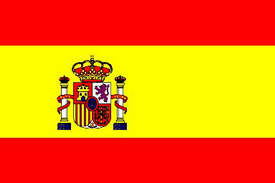A walk-through guide over solutions available to start using Bitcoin Lightning Network and the levels of use

 |
|
 |
|
 |
|
 |
|
 |
|
 |
|
 |
|
 |
|
Originally posted on Substack on Jun 10, 2022
Updated here on Dec 18, 2024
Introduction
In this guide I will try to give more insight to a beginner into using Bitcoin Lightning Network (LN), what solutions are available, how these works, which one should choose on each user level and situations where could be used.
Many new users just jumped in without knowing all these details and which is the correct way to take in each situation.
New Bitcoin users MUST have in mind one important aspect:
Be your own bank - Think like a bank
Yes, think like a bank is not easy, after so many years of fiat slavery and forced to think only as a fiat "bank client" (aka slave). For many this term is something new and hard to understand, but in the end, using BTC I am sure you will get it. Think like a bank means you will have to divide your BTC stash in 3 important parts: HODL (savings), CACHE (management, coin control), SPEDNL (your spending pockets)
Disclaimer:
- this guide is NOT to discourage new users to run their own nodes, but more to give them the right tools and WHEN they should start running their own nodes.
- this guide is focused on users with a low basic level of knowledge about Bitcoin and LN
- I do not endorse or promote any of the solutions presented here, I was just a tester/user of all of them and know how their processes are working, so I can say in each situation a user will be, which is the correct one. My only interest is that new users will use Bitcoin in the right way and we can have a better adoption and use.
As I explained and raised a warning about the actual state and use of LN in this article I considered that is needed also a continuation of it, with more recommendations and explanations for a new LN user. Just a warning is not enough if are not provided solutions and guidance. So please read first that article if you arrive into this one without knowing that part.
Here is another MUST READ guide, with more details about each wallet app described here and their categories.
Another IMPORTANT aspect: what is Lightning Network? Here is a simple analogy with the airport.
So let's dive in starting from this diagram, explaining each level and processes could be done and what the new user should do.
BEGINNER LEVEL
This category (I name it NEWBIES) is totally for beginners, users that they never used Bitcoin and/or LN.
Why? Because it contains simple apps, with simple processes, mostly to accommodate with usage of BTC and LN and NOT focused on self custody, keys control, max privacy, non-KYC (Know Your Customer), some of them even contain ramps fiat/BTC to easy onboard a nocoiner with easy steps to buy some BTC to start.
Use cases:
- user just want to play around with LN, testing, getting comfortable, knowing more about processes
- user is not a medium/high level technical prepared or is just a kid
- user is a small merchant that just want to get his feet wet with sats
- user do not want or can't run its own BTC ⚡️ LN node
Description
All these wallet apps and services are CUSTODIAL and they depend totally on connecting to a dedicated server, that the user cannot control.
Most of the services are with KYC verification process, But some are not.
Some of them are LN only and backup/restore process depends 100% of the provider.
But with all these "warnings" new users could start with these apps, with small amounts, just enough to be able to pay for few things, play around, send tips.
No matter what "privacy advocates" says, using these custodial apps is just fine, if you keep it in a low basic level. I recommend also to read this another guide about 3 levels of BTC stashing so you will understand where these are positioned.
Each one have its own features and specifics, as I described them in this guide and here is another one how to start using them.
Apps Links and description
- Alby - Browser extension with its own custodial wallet and/or various connections to your own node/wallets/funding sources. Very handy with LNDhub account.
- BlueWallet - Powerful beginner BTC/LN wallet, also for intermediate and advanced users, multi-accounts, multisig, advanced features, funding LN wallet from onchain, ramp fiat/BTC, no-KYC
- Blink - Simple LN wallet LNURL/LN address support, web PoS, LN<-->onchain integrated swaps, light KYC
- CoinOS - Web wallet BTC LN, web PoS, LNURL/LN Address, integrated swaps and keys control options, no-KYC
- CashApp - Simple BTC/LN wallet, ramp on fiat/BTC, KYC
- LN Voltz - LNBits Bank for Brazilian community, LNURL/LN address, multiple extensions, no-KYC
- Strike - Simple LN wallet, ramp on fiat/BTC, KYC
- Wallet of Satoshi - Very simple LN wallet with option to send/receive onchain, LNURL/LN address, no-KYC
- Walletano - very simple wallet, multiple accounts, LNURL/LN address, web / PWA
- Zebedee - Social/Gamers LN wallet, LNURL/LN address, with options to buy BTC and levels of KYC
INTERMEDIATE LEVEL
This category (I name it SPENDERS) is for users that already have a base knowledge about how BTC and LN works. Also is for those that they want to have more security and privacy for their wallets.
These wallets can/will connect to own private Bitcoin nodes. None of them are KYC or custodial and have more or less advanced features.
Use cases:
- user wants to run his own Bitcoin Core node and use various apps to it to validate and broadcast his own onchain transactions (txs).
- user wants to run a PRIVATE LN node, connected to his own Bitcoin Core node.
- user wants to use LN in a non-custodial way and also validate his onchain txs with his own node.
- small merchant that want to accept BTC ⚡️ LN in a more private way and with self-custody of his funds.
Description
I would strongly recommend this level for all those users, that want to start using LN more often, but still they do not have a high level of understanding about how LN routing, liquidity and processes works. Let's say for regular BTC users, normal usage of LN (pay here and there regularly) with no real necessity of running a full LN node with a lot of liquidity and routing.
For a normal LN user there's NO NEED to run a "routing node" just to be able to pay your stuff using LN.
These apps are actually little LN nodes, but PRIVATE. That means, the user can manage LN channels and liquidity, but these are unannounced (private) on the public LN network. These LN channels can send and receive sats just as any regular LN node, but will not "route" others payments through these private nodes (because are not "visible").
With 3-4-5 or max 10 private channels these apps can handle a large amount of payments even for a small shop. See here more details about how a merchant can handle LN liquidity with these wallets.
User can still run a full Bitcoin node, at home, to where can connect these mobile apps (onchain and/or LN nodes wallets), all these apps offer this option. Running a personal Bitcoin node is when the user understand the importance of it, for himself and for the entire network.

This intermediate level is also used as a level of coin control, swaps, funds management, ramps to buy BTC, spending and control of the funds.
Apps Links and description
- Blixt Wallet - Powerful mobile LN node wallet with amazing rich features that can be used as a private LN node in many use cases. Soon desktop version and more advanced tools.
- Zeus LN - Mobile node wallet, very powerful and with rich features, multi-account, multi LN implementation, LNDhub, LN address
- Breez - Mobile LN node wallet with PoS and podcasting included.
- BlueWallet - Mobile/Desktop (Mac) BTC/LN wallet, multi-accounts, multisig, advanced features, funding LN wallet from onchain, ramp fiat/BTC.
- Electrum - Desktop and mobile onchain and LN wallet, using trampoline channels or private channels, swaps integrated, multi accounts, old but powerful app.
- Phoenix - Mobile LN wallet (no channels management) with integrated swaps.
- Valet - Is a fork of SBW, to implement Standard Sats, with hosted and private channels, rich functionalities for onchain and LN wallet.
- Green - Desktop onchain only wallet, mobile also have included a LN node with Greenlight backend, quite basic use.
- BitKit - still in developing phase Beta, LDK implementation. Read a warning here.
- Sparrow Wallet - Powerful onchain only desktop wallet, coinjoin, coin-control, multi accounts, advanced features.
- Specter - Advanced onchain desktop wallet management, multisig, coin control, multi accounts.
- Nunchuck - Multi-platform onchain only wallet, privacy and security focused.
- Wasabi Wallet - Desktop onchain only wallet, privacy focused, coinjoin features
- Bitcoin Core - Desktop onchain only wallet for your Bitcoin node.
ADVANCED LEVEL
This category (I name it EXPERTS) require a high level of knowledge about Bitcoin, LN, liquidity, routing, economy, technology, linux use and hardware.
Also require one important aspect: FUNDING, lots of sats to be used in channels liquidity and routing.
If you are just a beginner that let's say you have some other requirements but you still don't have large amount of BTC to be used in your node LN channels liquidity, you can skip this level from now. Just with some few millions of sats you will NOT do any "good routing", so please is better for you and for the rest of the network that you stay away.
Please don't take me wrong, I don't want to discourage you or limit or exclude you from the Lightning Network, not at all, when you are ready with all requirements you will be more than welcomed to participate. LN needs liquidity, but good liquidity so that the flow of sats will be seamless, fast, cheap and less congestion for everybody.
As much as you want to "help the network", you will NOT help it at all. As I described in this 1st part article about the state of LN, the situation is not so good and new users MUST understand and do an effort and start learning more about these things and in special how this damn LN works, in deep details.
This level IS NOT for users that didn't read at least some LN documentation. I saw many users starting their routing nodes with NO IDEA about how LN works!
So PLEASE start reading, it is very important, it is very serious, this is NOT a game that you start it and you say "ah whatever, I will just ask on the chats and forums how I would do that and that... and see where is going".
If we want to change the finance of the world with Bitcoin and LN, users and in special node operators MUST learn first and be well prepared for this journey.
Important links to LN resources (bookmark them):
A. General information and documentation about the Lightning Network
- An Overview of Lightning Network Implementations – by Fulgur Ventures
- Lightning Network Resources, complete library about LN - by Jamesson Lopp
- LND Documentation - by Lightning Engineering
- CLN Documentation - by CLN team
- Lightning Node Management – by openoms, excellent guide!
- Lightning Node Management en Español – by openoms
- Beginners LN Guide – by Bitcoin Q&A
- Lightning Network Dev Curriculum – by Chaincode Labs, very good resources
- Node recovery tools - by Guggero
- Wiki Lightning Network – by ION Radar Tech
B. Guides and Video tutorials about the Lightning Network and Bitcoin nodes
- What is a Bitcoin node
- The Lightning Network: The most efficient payment system in the world
- How LN channels work – by Decentralized Thought
- LN explained – by René Pickhardt
- LN Channels Management – by Alex Bosworth
- Everything you need to know about LN – Till Musshoff
- Chaincode Labs Youtube channel - a lot of presentations about LN
- The power of valves for better flow control - by René Pickhardt
- Multi-Part Payments, Zero Base Fee - with René Pickhardt
- Evaluating Path finding Strategies on the LN - with René Pickhardt
More Lightning Network guides I wrote here.
Use cases:
- user want to run a ROUTING NODE and have ALL the requisites and want to be a LSP (Liquidity Service Provider).
- user is a medium/big merchant and need a self-custody payment solution.
- user is a wallet provider/developer and offers liquidity for its users and/or more connections with other wallets/solutions/shops/services
- user is an advanced LN user with good knowledge and skills and want to run a FAMILY NODE and/or provide liquidity for private nodes of his friends.
- user is a developer/tester and need to run a full LN node (hosted or personal).
- (!) user is an intermediate and want to learn more. This is acceptable with some mentions: you know the risks/possible loses/mistakes due to your own lack of knowledge and is better to inform your public peers of your node about your intentions. Do this ONLY if you really want to continue to became a full node operator and is not just for fun. Think twice before you start.
Description
On this level, users will have powerful tools and wallet apps to be able to manage their LN nodes and liquidity.
Also will require a good level of understanding for economy in general.
Why? Because LN is a payment network, is a liquid network that needs to flow in all directions, where and when is needed. Also involved fees for the transport of the sats.
A routing node operator is like a "pipes manager", in charge of opening/closing the flux of water on those pipes that are more suited and prepared for the specific amount of water in the specific direction.
Yes, there are many tools and apps that can do that task in a more automated way, but still the user have to know how to configure it and when to change the configuration.
If a node operator also provide wallets and liquidity for his own family and friends with his node is also a very important aspect to mention that he will have to know very well how to give support for its "customers" and provide the right apps and wallets for that, also watching closer their "spending behavior" and know when and where to move the liquidity needed. This is NOT an easy task as it seems!
Another aspect to mention here: DON'T BE GREEDY!
Just because you run a routing node, it doesn't means you now can charge any high fee you want. In theory yes, you can set whatever fees you want for your traffic, but in the end is a free market and slowly your node will be "avoided" by specific wallets.
So you better concentrate in helping LN adoption now than "getting rich" quick, is all about how to fuck the banksters and not how to fuck each others...
Don't fall into the dark side...

Apps Links and description
- Zeus LN - Mobile node wallet, very powerful and with rich features, multi-account, multi LN implementation, LNDhub, LN address
- BitBanana - Mobile node management and wallet, basic tools, multi-account, only LND supported
- FullyNoded - Mobile/Desktop node management, only Mac/iOS, LND/CLN supported
- Spark - Mobile/Desktop node management and wallet, minimalist features, only CLN
- Thunderhub - Desktop web powerful node management with rich features, only LND
- RTL (Ride The Lightning) - Desktop web powerful node management with rich features and tools, LND/CLN supported
- Clams - minimalistic app to manage your remote CLN node
- LNBits - Powerful accounting system based on LNDhub on top of your regular LN node. Here you have some use cases for this amazing suite: "The Bank of LNbits" and "LNbits for small merchants" and "How to start with LNbits"
- BlueWallet - Mobile app that can connect and use from your node a LNDhub wallet, easy to use for family and friends connecting to your node.
- Alby - Browser extension with its own custodial wallet and/or various connections to your own node/wallets/funding sources. Very handy
See more tools and bundles to manage your LN node here.
See more Lightning Network guides I wrote, here.
CONCLUSION
I wish I could put even more details into each part of this guide, but as you can see, from the multitude of links inserted, most of the aspects were already explained, so please make the effort and read all the links posted.
I am not looking for followers just to visit my blog, not at all, I just want to offer a seamless experience for the new user, to get the idea of studying, reading and learn from others experiences. This is NOT about me, is about our future.
Maybe in few days/week/months I will not be online anymore, retiring alone into the mountains, but at least my writing, experiences, knowledge accumulated during all these 10+ years in Bitcoinlandia, will remain and be read and used by newbies.
This work is for THEM and for their kids, for their future, to be an example to follow and learn from my experiences.
In my closing words, I wish that all BTC/LN users will read this guide and think about it seriously, taking in consideration my advice (based on several years of testing), no matter if you already started but you feel lost, maybe this guide will give you a better view about how this Bitcoinlandia works.
As for new users that you landed for the first time into this guide, please go back and read ALL my guides, from the beginning, I wrote several, for many different situations and levels of knowledge.
Don't be afraid! I know is hard, is fucking hard to understand all these tech terms, but slowly with patience you will get through. I was like you too, many years ago, struggling, BUT I NEVER GIVE UP from learning more and more about BTC and LN.
NOTE: if you read this guide and you have friends and family that still don’t understand it, please take it, translate it or re-write it in their own words. All my guides are “open source” I do not claim or waive any copyright over them. This knowledge is free for everybody.